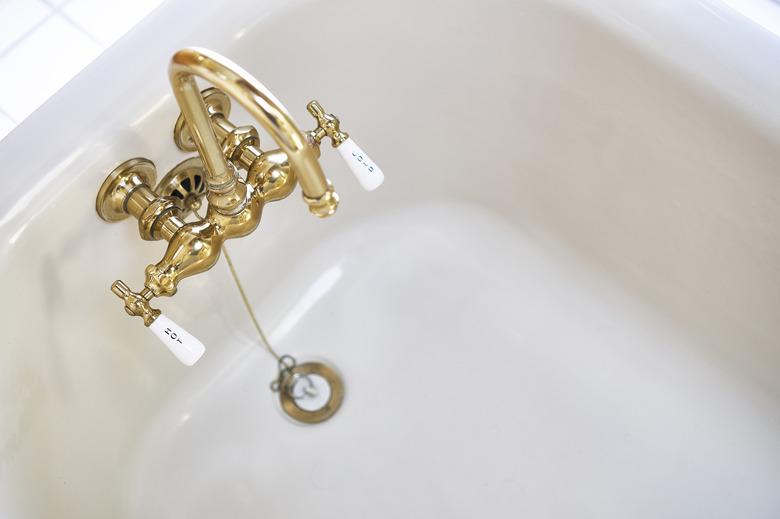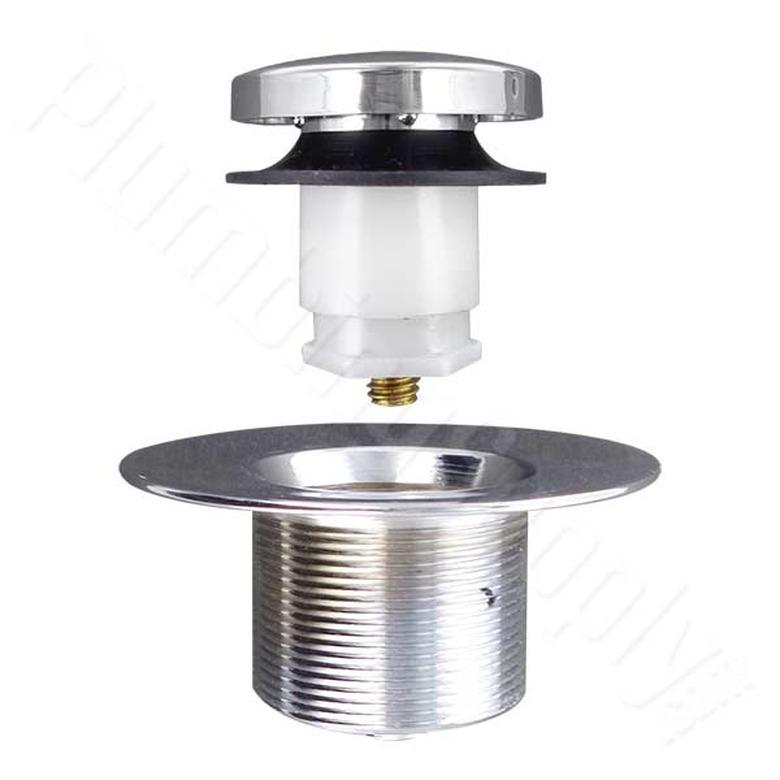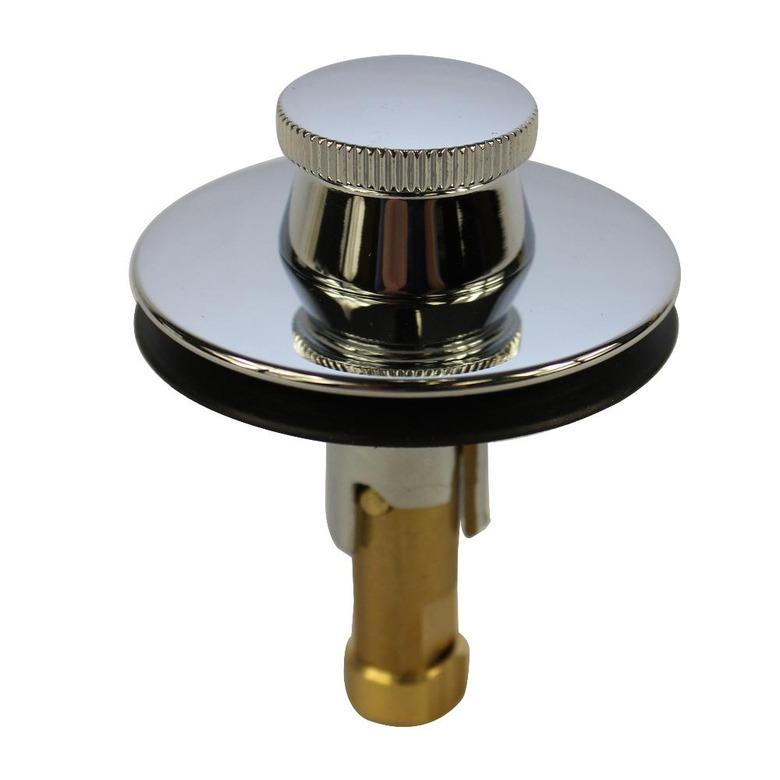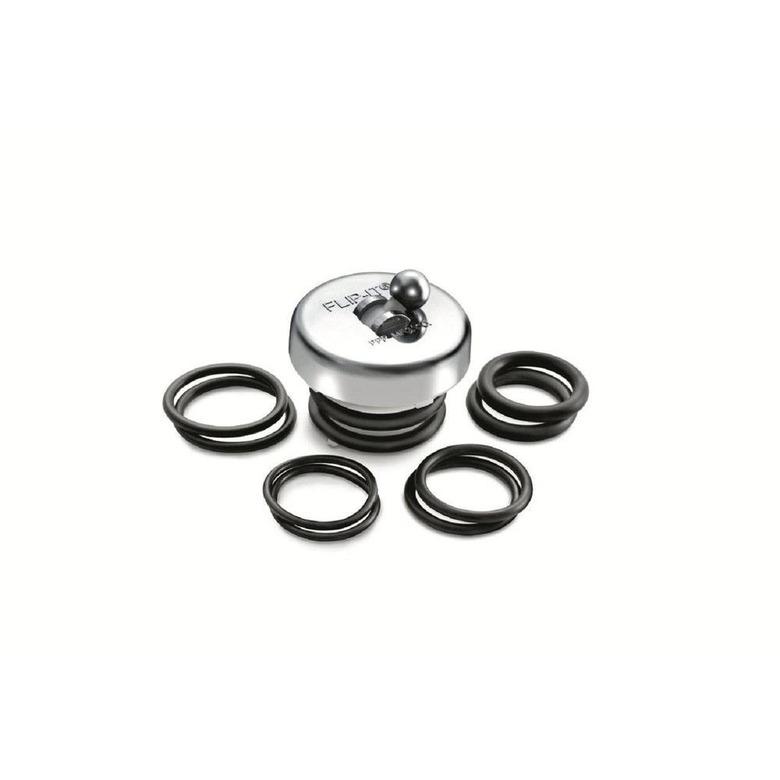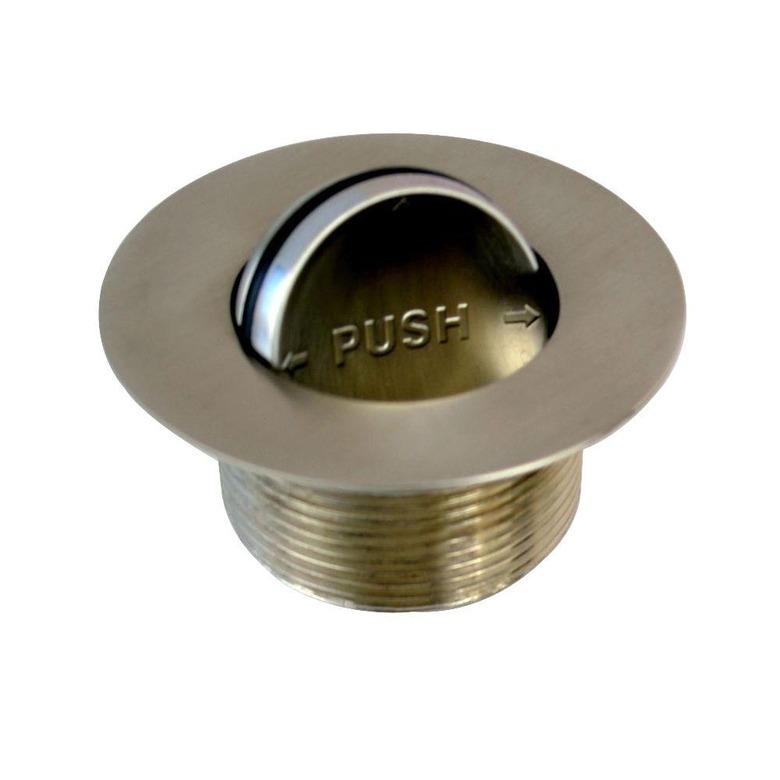Types Of Bathtub Drain Stoppers
Plumbers generally identify six different types of bathtub drain stoppers, not including the simplest ones of all—the rubber plug and the rubber drain cover. Most stoppers are easy to identify, and figuring out how they work isn't challenging. One type of stopper may puzzle you, though, because it doesn't even appear to be there, yet it somehow manages to hold water. This is the trip lever stopper, which does its work deep inside the drain where you can't see it.
Like any plumbing component, bathtub stoppers require periodic maintenance. Some have rubber seals that wear out, and all can stop functioning when the drain gets clogged by soap and hair. To perform this maintenance, you often have to remove the stopper. To do this, you need to know what kind of stopper you have and how it works.
Tip
Manufacturers design drains to accept certain types of stoppers, so if you don't like the style of stopper on your tub, you may have to replace the entire drain. If you don't want to go to that expense, you can always buy a rubber stopper for a few dollars. Or, if the drain has a strainer that prevents a plug from fitting inside it, purchase a rubber drain cover instead.
The Toe-Touch Drain Stopper
When you have a toe-touch drain stopper, there's no need to bend over. Simply push on the drain cap with your toe to close the drain and push again to open it. A rubber seal attached to the cap stops the water when the drain is closed.
The rubber seal is the most vulnerable part of this stopper. It can wear out, and soap and other debris can make it stick to the drain opening when the stopper is open, creating a pool of fetid water in the tub. This seal is easy to replace.
- Open the stopper, then grasp the cap with one hand and the shaft cylinder of the stopper with the other. Use a pair of pliers to grasp the shaft if you can't fit your fingers under the cap.
- Twist the cap to unscrew and remove it.
- Pry off the rubber seal and replace it with a new one.
- Screw the cap back on.
If you need to replace the shaft, you can do that by unscrewing the screw that holds it to the drain grid and lifting it out.
The Lift-and-Turn Drain Stopper
You do have to bend over to operate a lift-and-turn stopper, but apart from that, it works with little extra effort on your part. To close the stopper, you give it a slight turn to align a pin in the stopper with a notch in the drain, which allows the stopper to drop and seal the opening. Give it another slight turn, and the stopper locks in place. Reverse the procedure to open the stopper.
Most models are spring-loaded so the stopper pops back into the open position all by itself. The spring, as well as the rubber seal, can wear out. To replace either of these components, use the following procedure:
- Open the stopper and rotate it until you see the set-screw holding the cap to the stopper post. Remove this with a screwdriver or Allen wrench. If you don't see a set screw, turn the knob counterclockwise while you hold the stopper cap to unscrew it.
- Remove the cap, then lift the stopper off the post. Replace the spring and/or rubber gasket, as needed.
- Clean the drain, removing any hair that may prevent the stopper from seating, then reassemble the stopper.
If the stopper is old and the threads are worn, you may have trouble getting the stopper knob to turn. To make things easier, wedge a screwdriver under the cap and apply upward pressure on the cap to prevent it from spinning when you turn the knob.
The Flip-It Drain Stopper
A flip-it drain stopper works in any drain not covered by a strainer, and the concept behind it is the same as that behind a wine bottle stopper. You fit the stopper into the drain opening and swing the lever on top through 180 degrees. This forces rubber O-rings against the sides of the drain to make a seal. Swing the lever the other way to release the seal, then lift out the stopper to open the drain.
If the stopper is allowing water to leak slowly, you may have to replace the O-rings. In a pinch, you can improve the seal by spreading plumber's grease on the existing O-rings.
The PresFlo Drain Stopper
The only stopper in this list with a brand name, the PresFlo is a fairly recent innovation in the world of drain stoppers. It consists of a sleeve that fits into a conventional drain and a tight-fitting stopper that rotates inside the sleeve. You rotate the stopper to a horizontal position to close the drain and to a vertical position to open it.
As on most stoppers, the rubber O-ring does most of the work of stopping the water, and it has to be replaced every so often. To do this, you have to remove the stopper from the sleeve. The best way to do this is to flip the stopper to a horizontal position, attach a suction cup and pull it out. After replacing the O-ring, push the stopper back into the sleeve to seat it.
Lever-Activated Drain Stoppers
The last two stoppers on the list work in a similar way. They rely on a mechanism hidden behind the front of the bathtub that is controlled by a lever on the front.
Pop-up stoppers work just like sink drain stoppers. Lower the lever (or twist a knob) on the front of the tub and the tub stopper closes, then lift the lever when it's time to drain the tub. The mechanism that makes this possible is a lift rod connected to the lever and to a rocker arm that controls the stopper.
The lift rod isn't physically connected to the rocker arm, so when you want to remove the stopper for cleaning or to replace a gasket, you can simply lift it out of the drain opening. Do this by grasping and lifting straight up for about an inch, then pulling toward the back of the tub to extract the rocker arm from the drain.
Note that if the rocker arm gets damaged, you might have trouble finding a replacement. If so, you might decide to replace the entire stopper mechanism, but an easier solution is simply to remove the stopper and use a Flip-it or PresFlo stopper instead.
Trip lever stoppers are the mysterious drain stoppers that close the drain without appearing to be there. There's no mystery once you realize the actual stopper is in the pipes at the junction of the vertical overflow pipe containing the lever linkage and the horizontal drain pipe from the tub drain.
The stopper is a heavy cylinder that fits tightly enough in the pipe to stop water but not so tightly that it can't move. Lower the lever and the linkage lowers the stopper, which crosses in front of the drain pipe and closes the drain. Lift the lever, and the linkage lifts the stopper out of the drain.
To remove a trip lever stopper for servicing, you unscrew the overflow plate and lever trip lever from the tub and lift out the entire linkage—stopper and all. If the drain is leaking, you can lengthen the linkage with an adjustment screw. Shorten the linkage a little if the tub is draining too slowly.
